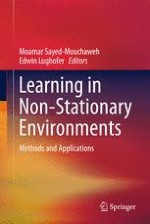2012 | OriginalPaper | Buchkapitel
10. Sequential Adaptive Fuzzy Inference System for Function Approximation Problems
verfasst von : Hai-Jun Rong
Erschienen in: Learning in Non-Stationary Environments
Verlag: Springer New York
Aktivieren Sie unsere intelligente Suche, um passende Fachinhalte oder Patente zu finden.
Wählen Sie Textabschnitte aus um mit Künstlicher Intelligenz passenden Patente zu finden. powered by
Markieren Sie Textabschnitte, um KI-gestützt weitere passende Inhalte zu finden. powered by
